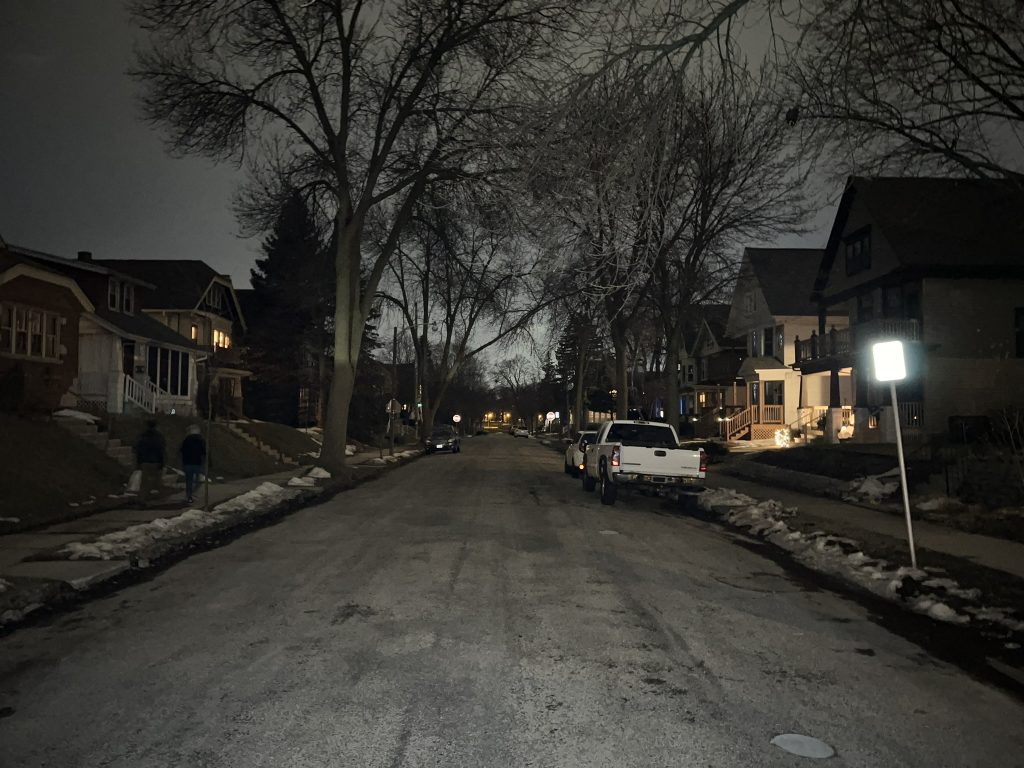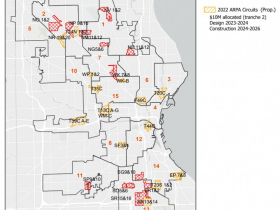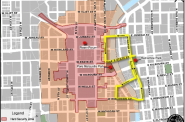Street Light Outages Vex City Officials
Even after passing street lighting fee the city struggles to hire electricians.
Two years after the City of Milwaukee instituted a street lighting fee, it’s still struggling to keep the lights on.
“We have a very big challenge on our hands. It has been an uphill battle with the aging circuitry,” said Department of Public Works engineer Rollin Bertran to the Public Works Committee on March 8.
The fee was passed to help the cash-strapped city hire and retain more electricians by boosting wages to compete with growing private pay rates, reduce repair times and accelerate the replacement of the worst-performing circuits.
But DPW hasn’t been able to hire the electricians, so repair times haven’t decreased and contractors have yet to be able to replace the worst-offending circuits.
Property owners have been paying the new fee, which amounts to approximately $40 per year on the average home, without any discernable service improvement.
Bertran said the average outage repair is currently 3 to 3.5 days, with six days at the peak. The fee was supposed to reduce the repair time to 24 hours, which was typical until recent years: From 2013 to 2017, electricians restored 99% of all outages within 24 hours. But that dropped to 91% in 2018, 82% in 2019 and 72% in 2020 as staffing levels dropped.
“Right now we have about 40% vacancy in the department,” said Bertran of the city’s electrical services workers. “Everybody’s on overtime for the most part. We are working three shifts, seven days a week.”
The freeze-thaw cycle brings a surge of outages at one time. “Last Monday, we had 75 area outages.”
Bertran said the city has hired about “five or six” electricians since the fee was instituted, with the street lighting division intended to have 47 electricians if fully staffed. DPW did not respond to a request for detailed figures.
Prior to Act 10, the state law curtailing public employee bargaining rights, the city indexed its wages to 95% of the local prevailing wage. But that practice halted in 2013. Wages fell to 81% of the prevailing wage. Bertran said it remains at about the same percentage today, with DPW awaiting a Department of Employee Relations (DER) payscale study to boost the wage again.
“For several months we have been working with DER specifically on our labor shortage,” said DPW operations director Danielle Rodriguez. She said the department as a whole has suffered from a 24% to 30% vacancy rate. That includes general laborers, plow drivers and several other positions. She said the newest payscale study would cover “240 some odd titles.”
Bertran said it takes about a year for a new electrician to become familiar with the city’s infrastructure. In addition, there are about 18 apprentices in a four-year training program. “There is a very complex wheel we are trying to grease every day,” said Bertran. “We are pulling people out of buildings sometimes to go to the street lighting. It’s challenging 24/7 when you don’t have the labor force.”
The engineer noted that even if the city is able to pay a competitive wage, its work environment is more challenging than many others. “We are outside in the elements, when it rains, shines or snows, we have to be there,” said Bertran.
What About Replacing The Failing Circuits?
The fee is to fund operations, but it was also intended to be free up other funding to be spent on replacing the failing circuits.
Approximately 33% of Milwaukee’s street lights are powered by pre-1930s series circuitry (similar to old Christmas tree string lights where a single bad light takes down a whole strand). Much of it lacks any insulation. Water penetrates the system and electricians must rush to triage the issue, knowing that many such problems may come all at once.
“Has anything been repaired yet?” asked Alderman Russell W. Stamper, II, noting that the initial street lighting funding was allocated in 2021.
Bertran said it takes nine months to design a new circuit and then it’s bid out for construction. “It takes about a year and a half to get that circuit completed,” said the engineer. The city allocated $10 million from the first half of its $394.2 million American Rescue Plan Act grant to replace the 13 worst-performing circuits. DPW said those circuits represented 492 of the approximately 3,000 annual outages.
Construction work on those circuits was due to take place in 2023 and 2024. Bertran said that work was on track to happen.
An additional $10 million from the second half of the grant was allocated in 2022 to replace an additional 16 circuits, with construction work expected to take place in 2025 and 2026. DPW estimated replacing those circuits would eliminate another 417 annual troubles.
DPW, in 2022, estimated that it would take $120 million to replace all of the antiquated circuits.
Committee members pledged to become more involved in the issue through a regular briefing. That would include getting an answer to Stamper’s other question – if the city hasn’t hired new electricians, where is the money going?
“I know the streetlighting fee causes a lot of heartburn on the council,” said Alderwoman JoCasta Zamarripa, the lead sponsor of the second funding allocation. She started last Wednesday’s discussion by noting she’s experienced what has become a spring right-of-passage for council members: “I got a couple of very mean complaints from constituents.”
Damaged Infrastructure and Replacement Map
If you think stories like this are important, become a member of Urban Milwaukee and help support real, independent journalism. Plus you get some cool added benefits.
Political Contributions Tracker
Displaying political contributions between people mentioned in this story. Learn more.





























“Bertran said the average outage repair is currently 3 to 3.5 days, with six days at the peak.”
As someone in a neighborhood that has been enduring what the city calls “Area Dark” for weeks, I found the above quote disturbing, especially knowing that MKE considers 3+ lights out “an emergency.” I feel for the current overburdened city electricians, but there really is no excuse for the mismanagement from above.
Since service has gotten worse following enactment of the extra fees, I think we should all receive a property tax credit. At the least, the city should suspend the fee until the problem is fixed. Guess I can expect that upcoming extra parking fees will not result in better roads either.
Of course, we all know that Wisconsin municipalities would not have to endure the budget troubles all are facing if Madison legislators would immediately provide emergency relief from the absurdly high budget surplus. And then revamp the shared revenue formula that has been atrociously insufficient for years. It’s our money! It is not the legislature’s slush fund.
Madison lawmakers: You continue to posture, politicize, and pander. Take your $55,000+ full-time salary (10th highest in the nation), plus per diem and benefits, and stay in session to fix this now!